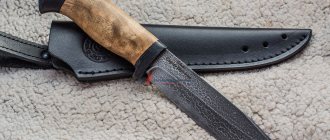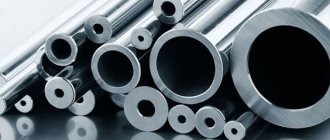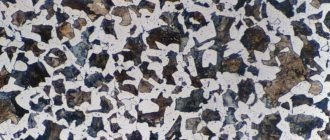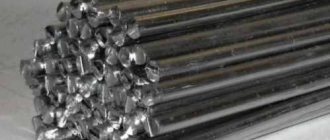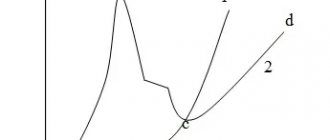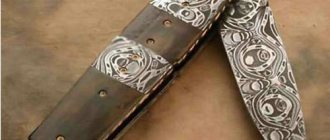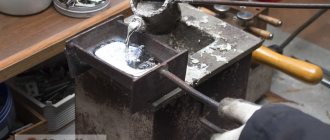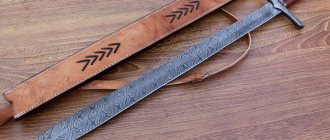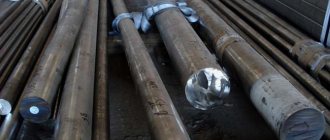How do you get damask steel?
Bulat can be obtained from some types of ordinary steel. The main condition is a low level of alloying of the material. It is impossible to obtain damask steel from high-alloy steel, and only low-quality damask steel from medium-alloy steel. Despite the fact that modern materials are superior to damask steel in their properties and do not require such complex processing procedures, there are still workshops in which enthusiasts make blades using ancient technologies. But the use of more modern tools makes it possible to smelt material of much higher quality.
In addition, many manufacturers are now adding additional elements to the alloy, which give damask steel new properties. This mainly concerns the use of chromium and nickel additives, which can significantly increase corrosion resistance. Some weapons, which are intended exclusively for collections and will not be used in staged battles, are completely covered with a layer of silver. This allows you to protect the steel from the negative effects of environmental factors. In addition, soft silver lends itself more easily to jewelry processing by applying thematic patterns or designs to the blade.
Damascus steel, unlike Damascus steel, which was also used for the production of blades, is characterized by a disorderly pattern. It is obtained as a result of crystallization of the metal lattice in the alloy.
Simplified technology for forging damask knives
To make a damask knife using the simplest technology, a blacksmith will have to work with sponge iron. First it needs to be forged, then mixed with charcoal and placed in a crucible. A crucible is a special vessel made of refractory material that can withstand temperatures of about 1,200 degrees. In this vessel, the future damask steel is heated to these same 1,200 degrees, after which it slowly cools.
Not a single blacksmith admits what exactly is happening there; it is possible that each one adds some secret ingredient, but the result should be real damask steel. A forging is made from the finished steel, which is then used to create a knife blade.
Material production methods
There are four ways to make damask steel. The first involves direct fusion of iron ore with crushed graphite. This is the simplest method from a preparation point of view, since it does not require obtaining pure iron. But for its successful implementation, ore with a metal percentage of at least 85% is necessary, otherwise you will not get good quality damask steel.
Ores containing native sulfur, which are quite common in nature, are not suitable for this option. So getting the right material will be extremely difficult. In modern conditions, this method is not used, since finding pure iron is not a problem, but in ancient times this method was most common in blacksmithing. The second method involves melting iron with direct access to coal. In this case, not only pure carbon enters the alloy, but also its oxides, which give the metal the structure of damask steel. This method is also not used now, because it is characterized by a high proportion of impurities in the resulting material, which negatively affects its quality.
The third method is long-term burning of iron without air access. This method is the cheapest to implement and therefore is widely used. The material obtained in this way is called cast damask steel. An important condition for obtaining good material is accurate calculation of firing time. Otherwise, excess carbon may be introduced into the alloy, resulting in poor ductility and brittleness. The fourth option is the most expensive, but at the same time allows you to obtain the best quality material. It involves fusing pure iron with graphite in an airless environment. This allows you to rid damask steel of unwanted impurities and oxide additives.
Products made from damask steel of this brand are most valued among connoisseurs, so they are quite expensive. In ancient times, only wealthy warriors could afford such weapons. Nowadays, blades serve mainly as decorations that are hung on the wall. Occasionally, they can serve as historical reconstructions of famous battles of past eras. For the above purposes, the best quality damask steel is used so that the weapon looks beautiful and does not differ in its properties from the best blades of famous blacksmiths. The most expensive samples are decorated with a variety of hand-made patterns that are dedicated to the theme of battles. The handles of the blades also serve for decoration. They are made from a wide variety of materials, from skillfully crafted animal horns to precious metals. Additionally, the hilt can be inlaid with multi-colored stones.
In addition to the above methods, there was another one that was not widely used. As an experiment, metallurgists in the Soviet Union tested the following method for producing damask steel. In the first stage, pure iron or low-carbon steel was melted in an induction furnace, and then silicon and aluminum additives were introduced into the melt, after which graphite was added to the resulting alloy. The output was cast iron with 3-4% carbon content. But the smelting process did not end there.
Iron or low-carbon steel scrap was gradually added to the melt in proportions so that the mass fraction of additives was 50-70% of the mass of cast iron. After cooling and crystallization, damask steel with a high-carbon metal mesh was obtained, into which low-carbon elements were woven. The resulting damask steel had excellent properties in terms of malleability and ductility, and also showed extreme hardness. But this method did not go into widespread production due to the complexity of the technological process and the high cost of smelting. In addition, more modern and advanced materials were already known, so such costs for obtaining damask steel were rightly considered unjustified.
The history of the appearance of damask steel
The first mentions of damask steel date back to the era of Alexander the Great. It was his chroniclers who spoke about wonderful blades that could easily cut iron armor and fabric flying in the air. These were the legendary damask blades, the secret of production of which the Indians did not reveal to the Macedonians.
India was the birthplace of damask steel. The secret of its production was kept in the strictest confidence, although finished damask steel ingots were exported to the East with might and main. Roughly 2,000 years ago, the Roman Empire conquered parts of the Middle East, and oriental goods poured into Europe. The main point of production of damask swords was the city of Damascus.
It’s worth stopping here and clarifying one point. Damascus never made damask steel; here they only forged swords, knives and sabers from it. In addition, many historians confuse damask steel and damascus, although these are completely different types of steel. The technology for producing damask steel consisted of alloying iron and graphite using a secret technology, and Damascus was simply forged from a package consisting of several types of steel.
Swords that were popular in the 3rd century AD are also sometimes called damask swords, but they are not even Damascus. This is a normal forge welding of hard steel in the middle and soft iron plates. Such blades were really sharp, due to the steel core, and perfectly withstood shock loads, thanks to the iron plates.
Many historians are confident that after the conquest of Rome by the barbarians, the secret of damask steel spread throughout Europe, but was lost during the Dark Middle Ages. If we consider that in those years all the barbarians were constantly at enmity with each other, then in order to lose the secret of making the best weapons in the world, they had to be destroyed every single one of them.
They say that the secret of making damask steel was rediscovered in the 16th century in Russia, but it was most likely the same Damascus.
Application area
When exclusively edged weapons were used on the battlefield, damask steel was highly valued. Only wealthy warriors could afford a blade made of such material. Today, damask steel is used in the production of blades, mainly for collectible edged weapons. The popularity of damask steel is primarily associated with the rather unusual pattern that is obtained on the surface of the metal.
Damascus steel is not widely used in other areas of industry This is due to the fact that it is significantly inferior to alloyed compounds in almost all respects. In addition, the complexity of manufacturing the metal increases its cost.
What is damask steel and its characteristics
The properties of damask steel are determined by the carbon content in the alloy - it is approximately 2%, so that the steel retains its elasticity and hardness. But the material gets its special properties precisely because of the melting temperature - if the raw materials are overheated, then such steel will not work.
The technical process for producing welded damask steel, that is, Damascus, is more complicated, but cheaper in cost. When producing a knife, it is necessary to connect packages of metal (preferably with different carbon content) together by forge welding, which allows you to obtain not a monolithic, but a multilayer structure.
pros
The main advantages of damask steel are:
excellent cutting properties;
high resistance to impact and bending loads;
high hardness and wear resistance;
Once you sharpen a knife, you can use it for a long time - damask steel holds an edge well.
Minuses
Everything in our world is not perfect:
expensive material;
difficult to sharpen due to the hardness of the steel;
does damask steel rust? - Yes. Corrosion resistance is low.
In fact, damask blades are of more interest to collectors , since among modern steels there are more technologically advanced options and at the same time more affordable.
Are there damask kitchen knives?
Many people ask, is it possible to make a kitchen knife from cast damask steel? This question cannot be answered unambiguously. You can make it, but before ordering such a knife, you need to carefully weigh everything:
- Not a single large knife company produces damask kitchen knives. You can say that they don’t know the secret of producing damask steel, but that’s just funny. A bunch of artisan blacksmiths know this secret, and no one wants to share it for a certain amount of money;
- Damask steel rusts, and this is very bad for a kitchen cook. Although most professional Japanese chefs work with carbon knives all their lives, and are satisfied;
- The price of a damask kitchen knife will be very high;
- A kitchen knife should not be thicker than 2 mm at the butt, and forging such a blade is very difficult;
- It will be very difficult to sharpen a kitchen utensil made of high-quality damask steel. A housewife definitely cannot cope with such work.
So it’s better to throw the idea of making a damask kitchen cooker out of your head, you don’t need it.
